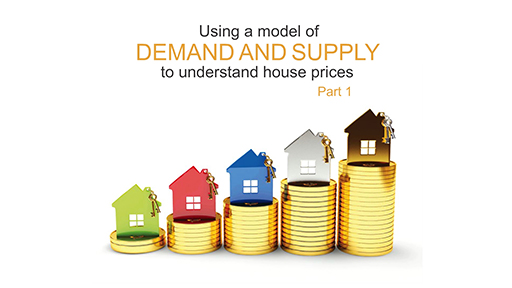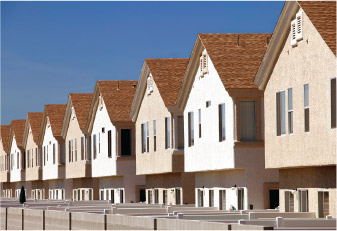5.1 A model of the housing market
Because a model is a simplified picture of some aspect of the real world, when we model the housing market here, we are going to ignore many of the complexities of the actual markets for housing. These complexities include:
- regional variations
- the distinction between new-build homes and currently occupied properties offered for sale
- the divisions that in reality exist between the markets for properties in widely different price bands.
We ignore these complexities in the interests of gaining insight into the general principles of the impact of demand and supply on property pricing.
However, in order to give a realistic sense of such a simple model, you could imagine a medium size, relatively newly built town where all the houses are the same, with all potential buyers paying an identical price – which can however vary up and down at different times. On the supply side, there might be a number of sellers wanting to move out, depending on average market prices and some new houses could be built if conditions are favourable.
Activity 15 Identifying equilibrium price and quantity
Video 3 is the first part of an explanation of the model step by step, in order to build your understanding of the main concepts used in a demand-and-supply model. Watch the video now, then answer the question that follows.

Transcript: Video 3: Using a model of demand and supply to understand house prices – Part 1
Using a model of demand and supply to understand house prices – Part 1
Open the interactive figure below in a new tab or window.
Drag and drop the letters to the corresponding point of the diagram that fits best the description.
Discussion
Point B corresponds to the equilibrium price that satisfies the same quantity (number) of buyers and sellers.
The excess number of potential sellers (quantity D minus B) have dropped out as they would have liked to sell at a higher price than at B and the excess number of potential buyers (quantity A minus B) have also dropped out as they wanted a lower price than at B.
Potential buyers at C would have been happy to buy at price C but as there were too many potential sellers at that price (price at C and price at D is the same: same horizontal dashed line) so that the price was reduced, attracting more potential buyers and making some potential buyers drop out until the number of willing buyers increased and the number of willing sellers decreased and they reached the equilibrium position B at a lower price.


